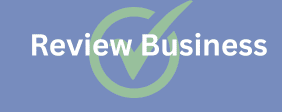New data from shows how advertising can be made more effective when brands combine paid and organic content.
Released new insights that reveal how brands can benefit from adding more organic content to their marketing strategy if they primarily post paid ads. The social media platform also found that users aren’t likely to be won over by ads alone. What they want to see from brands is organic content, in addition to paid and sponsored content.
Reveals that the way to supercharge your strategy in
their platform is through the “Always shop Engaged” approach. According to them, an Always Engaged strategy “utilizes organic and paid while leveraging creators to help brands reach unique business goals. This integrated approach allows brands to be dynamic, engaged, and active on the platform, leading to an increase in brand love, recall, and resonance.”
Why should you post a mix of organic and paid content on TikTok? These data reveal the answers.
- 173% increase in top of mind awareness after two exposures to a brand’s content on TikTok – When users are exposed to both paid and organic content from brands, the ads are perceived as less intrusive and don’t interfere with their experience on TikTok.
- 20% increase in brand love – Organic content is more likeable after viewing a paid ad.
- 27% increase in brand recall – Organic content has an increase in brand recall when viewers see organic before paid.
- 18% increase in brand relevance – Organic content is more relevant after viewing a paid ad.
- 2x increase in return on ad spend (ROAS) – The Branded Hashtag Challenge brought a 2x global increase in ROAS when that participation occurred — and that 2x ROAS amplified all paid efforts.
Shared additional insights and best practices that can help you succeed with the Always Engaged strategy
- Use your organic strategy to test identification instead of personal content and creator partnerships.
- Work with creators through Creator Marketplace to amplify content.
- Paid ads get attention faster and audiences gravitate towards the caption and call to action.
Search
InLinks Releases New Keyword and Topic Research Tool
InLinks launches a keyword research and content planning tool that gives more context to keywords.
Most keyword research is based on looking buy lead up a keyword’s search volume and CPC value. With its new Content Optimization Editor launch, InLinks introduces meaningful clustering and a whole new approach to satisfying user intent.
Their new Keyword Research Tool aims to:
- Take into account the context and verbs used in the search as well as the advertiser’s competition
- Group relevant keywords into relevant topic clusters and include meaningful questions that Google searchers actually look for
- Help advertisers develop a content plan that not only suggests the keywords and topics but also what questions need answering
In a nutshell, InLinks is launching a tool
that goes beyond just keyword research to actually recognizing the context of keywords and the user intent.
User intent is traditionally classified as belonging to different categories such as navigational, transactional, and informational. However, InLinks is getting rid of those labels and instead they’re categorizing user intent using highly specific verbs.
For example, when you take the phrase “renewable energy” and run it by a keyword research tool, the research is done without knowing your website. There is no semantic analysis of the competitors ranking for the term and there is no secondary lookup of phrases, connecting themes together. Identifying intents by the verbs helps drill down to the right keyword topics.
